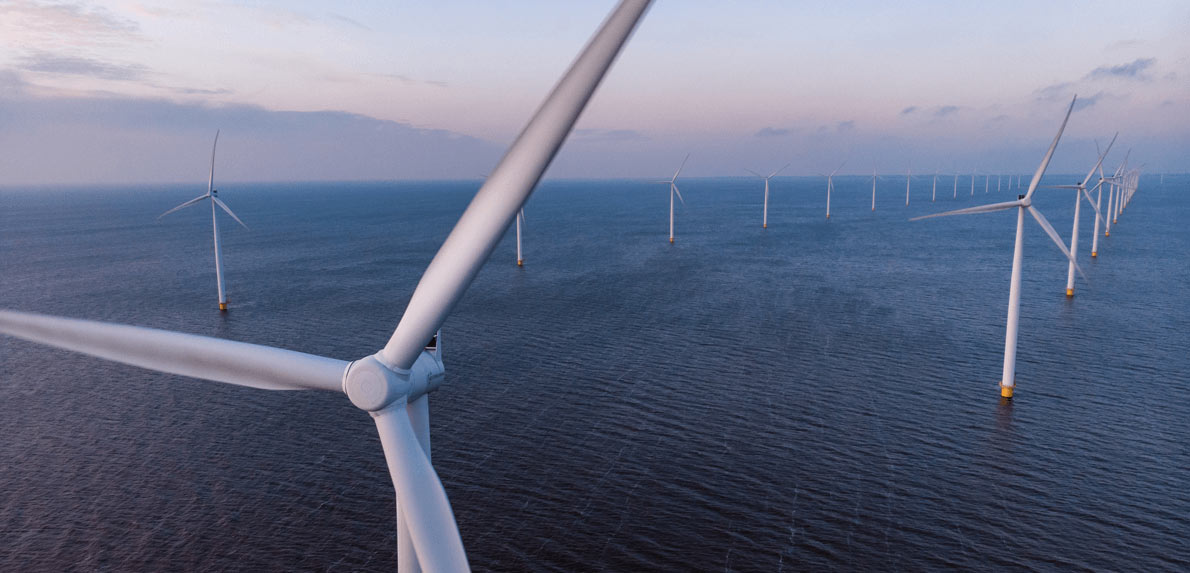- Articles

- Développement durable
- Transition vers un modèle net-zéro
- Transition énergétique
How to get ahead on the road to net zero for SMEs
In our recent HSBC Transition Pathways survey conducted by Kantar, we sought to understand sentiment from Small and Medium Enterprise (SMEs) sized energy companies on transition and explore some of the levers they are pulling to ensure they remain relevant in the sector, where capex is going and possible impacts for suppliers.
This article serves to address some of these frequently asked questions and provide some useful tools to help you on your journey.
Why do I need a transition plan? Aren’t they only for big or listed companies?
Transition plans limit risks and produce benefits. On the risk side, planning for the energy transition is vital to ensure business models remain relevant and profitable over the long term.
One major risk concerns stranded assets; researchers have estimated that half of the world’s assets related to fossil fuels, such as pipelines and power plants, could become worthless by 2036 under a net zero transition1.
But it will not just be major infrastructure that is affected. For example, fewer petrol stations will be needed as a larger share of vehicles become electric, and distribution networks for combustible fuels such as gas or wood – which still accounts for up to 30% of energy use in India2 – will become redundant.
The benefit of being a smaller business is that you’re either flexible enough to make far-reaching changes to established processes, or small enough to build your whole strategy on a climate-first approach3.
In our recent Transition Pathways survey, that sentiment is certainly held by 80% of smaller firms (US$5m – US$9.9m revenue turnover) who confirmed they have started to plan for net zero and over 92% of firms responding that net zero is fundamental or important to business growth.
Most energy companies are talking about a net zero emissions target by 2050. What’s the rush?
There are many reasons why it pays to plan and act now.
Firstly, sentiment from business in our survey suggested that companies are working towards shorter horizons. For example, 69% of SMEs who had a Scope 1 and 2 net zero target hoped to meet that between 2025 and 2030, with many using Science-based targets to support their pathway.
Secondly, given the increasing incidence of climate-related extreme weather, which is causing considerable harm to economies and food security, governments and regulators are expected to get a lot tougher on companies that contribute to climate change – it is simply prudent for energy businesses to proactively prepare for this inevitable policy response4.
And thirdly, we are seeing first-mover advantage is helping to win market share among consumers who are showing a preference for brands that address climate change5. Investors and banks, too, are prepared to extend financing on preferential terms for companies with sustainable objectives. HSBC UK’s Green SME fund is one such example, rewarding customers with preferential pricing if their business model and targets contribute to sustainable outcomes. It also helps with employee retention given the growing trend for people to want to work for employers aligned with their values.
While early movers on climate transition planning could grow market share or potentially even establish new markets, those who continue to wait are at risk of being left behind or priced out. We saw large businesses (US$2.5bn revenue turnover) looking to influence their scope 3 emissions with the use of pricing (68%) and procurement provisions (65%) in the next two to three years. As these pressures intensify, smaller businesses can get ahead of the curve by positioning themselves as low-carbon partners, through training, certification and a clear disclosure and reporting framework.
What should my climate transition plan look like?
There are lots of different pathways, and lots of different technology options, but it all starts with a plan. The first step is to understand your emissions and set some targets. Measuring the sources and levels of your current greenhouse gas emissions is an essential – and affordable – first step.
The next, more difficult, task is to imagine what your company needs to be doing in the future to be on track to net zero. What does that mean for legacy business lines? What new businesses might evolve? This often requires companies to think about a longer-term vision than they would in a typical business plan. Many energy companies have set interim targets to signal their intentions.
Once there is a plan in place, banks and investors will want to know if it is funded: how much of your capital expenditure is going towards the transition?
In the survey, it was clear that it was not only large-scale business committing cash to their transition plans, 59% of SMEs are investing approximately 6-10% of capex on net zero. Our survey shows that SME energy businesses found that renewable energy portfolio growth, lifecycle assessments and electric mobility are the top current zero-carbon investments.
What is more encouraging is that current 19% of SMEs spend more than 10% of capex on net zero and that look set to rise by 22% in the next two to three years to 41% of SMEs.
Transition plans need to be mapped against existing business lines so stakeholders can really see and map reduction in emissions over time. And they need to be funded. If those two things are in place, then as a bank we can have a lot of comfort that the company is on the right track.
|
How can I get a clearer picture of my Scope 1 and 2 emissions?
When looking at the survey results, it was clear that most SMEs are favouring four ways to bring down their Scope 1 and 2 emissions: use of and investing in renewables sources (33%), upgrading and retrofitting to delivery infrastructure and services, e.g. pipes (33%), use of sustainable construction, manufacturing, implementation methods (31%), and the use of low-carbon or EV solutions during transport and logistic (28%).
As part of our own efforts to understand the impact of our portfolio, HSBC has established expertise to support your transition and discuss your transition planning and we are able to connect clients with the appropriate service providers.
These include, the SME Climate Hub, part of the United Nations Race to Zero campaign, which offers tools and resources to help businesses monitor their carbon emissions. These include its 1.5 Degree Playbook, Climate Fit Programme and a Business Carbon Calculator powered by Normative, a Swedish carbon accounting software company, founded by former climate scientists and co-supported by Google.
Who can I turn to for help on my Scope 3 emissions?
With Scope 3, there are a variety of ways to start to engage around your emissions – with your buyer network, industry bodies and also with your relationship manager.
Notably, when it comes to framework and reporting, the open CDP SME Climate Disclosure Framework is built upon CDP’s expansive experience working with corporations, including over 1,800 disclosing SMEs ranging 50+ countries. The framework improves SMEs’ ability to report their climate impacts and strategies to multiple stakeholders and will provide a foundation for implementing simplified reporting tools on the SME Climate Hub, helping them to engage with buyers and other suppliers.
I have a climate transition plan, but it will be very expensive. What kinds of sustainable financing options are available?
Climate transition projects are attractive to providers of capital, including banks and institutional investors. This means credible plans can improve access to funding – though of course the terms of any financing will depend on many factors.
HSBC offers a range of green and sustainability-linked financing options for businesses wishing to develop climate transition strategies. These are often available with preferential terms, covering sustainability-linked and green loans, trade finance, hire purchase and leasing, project guarantees, bonds and venture growth funding.
How is HSBC supporting businesses in this area?
We have enabled clients around the world to act on their climate and sustainability ambitions. Here are a few clients we've been supporting:
- Powin, an energy battery storage company is partnering with HSBC to take its cutting-edge technologies global.
- In Vietnam, we arranged the country's first sustainability trade financing instrument in the shape of a green guarantee facility to support PCVN's bids for renewable energy projects.
- And in Australia, we extended green project finance to a French renewable energy company to develop a wind power project delivering clean energy to 100,000 homes in the country's far north.
HSBC's extensive international network, deep expertise in sustainability, sector expertise and broad range of sustainable finance offerings allows us to be a trusted partner on your climate transition journey. We aim to be able to provide not only funding, but also guidance and access to connections and opportunities.
For more information about how we can support your business, please contact your Relationship Manager or complete the contact us form below.
Today we finance a number of industries that significantly contribute to greenhouse gas emissions. We have a strategy to help our customers to reduce their emissions and to reduce our own. For more information visit www.hsbc.com/sustainability.
Please note, this article contains links to third party operated websites. Such websites are not under HSBC control and we are not responsible for any content of such third party websites. Access to any third party website is at your own risk.
How to get ahead on the road to net zero for SMEs



